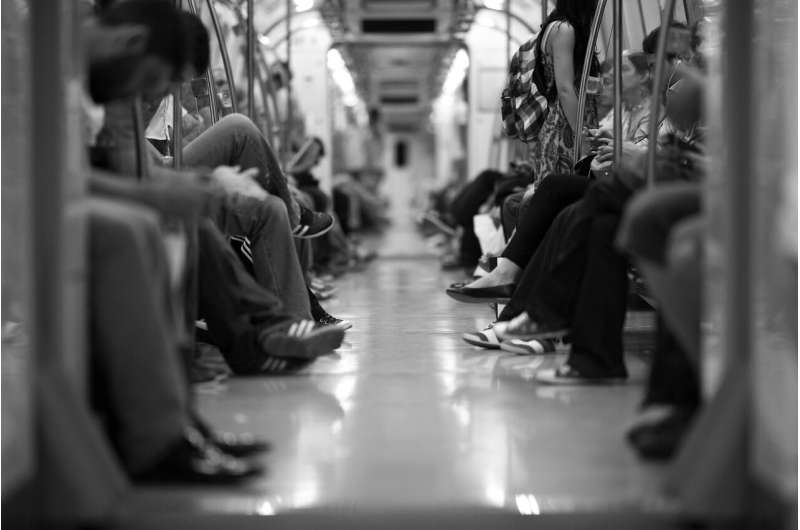Credit: CC0 Public Domain
Epidemics often bring a search for scapegoats, with anti-Asian harassment in the wake of COVID-19 the latest example. Likewise, ideas circulate that different races also differ in their susceptibility to the disease, evidenced by a myth that blacks were immune to the virus. Both are subjects familiar to Rana Hogarth, a history professor at the University of Illinois at Urbana-Champaign who teaches the history of Western medicine and African American history. She spoke with News Bureau social sciences editor Craig Chamberlain.
What does the past history of epidemics suggest about the root causes for harassment and racism directed at Asians and Asian Americans today?
Epidemics can trigger so much anxiety and people want to gain control by trying to make sense of it. Historically, blaming the marginalized in society served the purpose of explaining disease in a way that conformed to a specific worldview. It rationalized and brought a semblance of order to a world turned upside down.
Targeting groups to blame is often also the result of underlying social or political tensions—and groups that are seen as economic threats, as not assimilating or conforming, often bear the brunt of this. Thus, how we frame diseases and understand epidemics as a society becomes political—no matter how apolitical we think diseases are.
This was the case in the early 20th century when the plague appeared in San Francisco's Chinatown. In this instance, Chinese people were blamed for its spread and were unfairly singled out as carriers of the disease. Prior to the plague's arrival, there were already negative ideas circulating about Chinese people, fueled by economic fears that attributed unemployment and declining wages to Chinese workers, whom many white Americans also viewed as racially inferior. The plague amplified these sentiments and Chinese people were wrongly viewed as vectors of the disease. This history, within a long history of anti-Asian stereotypes and sentiments connected with epidemic disease, is one reason that calling COVID-19 the "Chinese virus" is problematic today.
We can go back even further to violence against Jewish communities in 14th-century Europe during the Black Death. Jewish populations were viewed as outsiders and were unfairly accused of causing the plague by poisoning wells. This idea gained credence among those inclined to incorporate anti-Semitic viewpoints in their explanations for the disease.
It seems we saw a twist on this impulse earlier in the current pandemic when the myth circulated that African Americans were immune to the virus.
That is a prime example of people jumping to conclusions and creating explanatory frameworks based on incomplete information. There was commentary on social media that black people were not getting COVID-19. Flashing forward to what we are seeing now in Chicago and elsewhere, black people are overrepresented in both cases and deaths.
The past offers perspective on how perpetuating such myths about racial minorities or assuming innate racial difference can have devastating consequences. During Philadelphia's 1793 yellow fever epidemic, for example, medical wisdom of the day said that black people were inherently resistant to it by virtue of their race, which later turned out to be not true.
When yellow fever ravaged the city, white physicians asked the free black inhabitants to stay behind and help bury the dead, nurse the sick, dig graves, etc. One result of this dangerous myth was that a nontrivial number of black people actually did get yellow fever and some died of it.
Your book "Medicalizing Blackness" describes how American medicine, early on, developed ideas about black bodies being different in basic ways—regarding disease, tolerance of pain, etc. How do you see that still playing out today?
One of my aims in writing that book was to understand how and why physicians constructed black people's bodies as inherently distinctive from white people's bodies. To be clear, I am not saying that we should not consider individual traits, even race, when assessing health outcomes and vulnerability to disease. What I am saying is that we must be careful in how we do that because it makes all the difference.
Major media outlets from Chicago and across the nation have been reporting on how African Americans are being disproportionately impacted by this virus. We've seen headlines stating black people make up about 68% of Chicago's deaths from the disease but only about 30% of the city's population, followed by data on their high rates of comorbid conditions such as diabetes, hypertension and heart disease.
We need to remember that these preexisting conditions that make one vulnerable to this virus can be exacerbated by structural inequality and racism. Lack of consistent access to health care services or lacking health insurance coverage can lead to suboptimal health outcomes. Moreover, racial discrimination in health care settings, implicit bias in medical decision-making, etc., can make it that much more difficult for African Americans to seek out and receive appropriate care.
One major point I hope to emphasize in my work is that we should consider such disparities as a function of how black people's bodies have been regarded by the medical profession and within medical settings, in addition to how they have been treated by society as a whole. That way, we shift our efforts away from trying to understand what might be different or unique about black people's bodies, to trying to understand how the often-hostile spaces their bodies might be forced to inhabit can influence their overall health outcomes.
Provided by University of Illinois at Urbana-Champaign
























